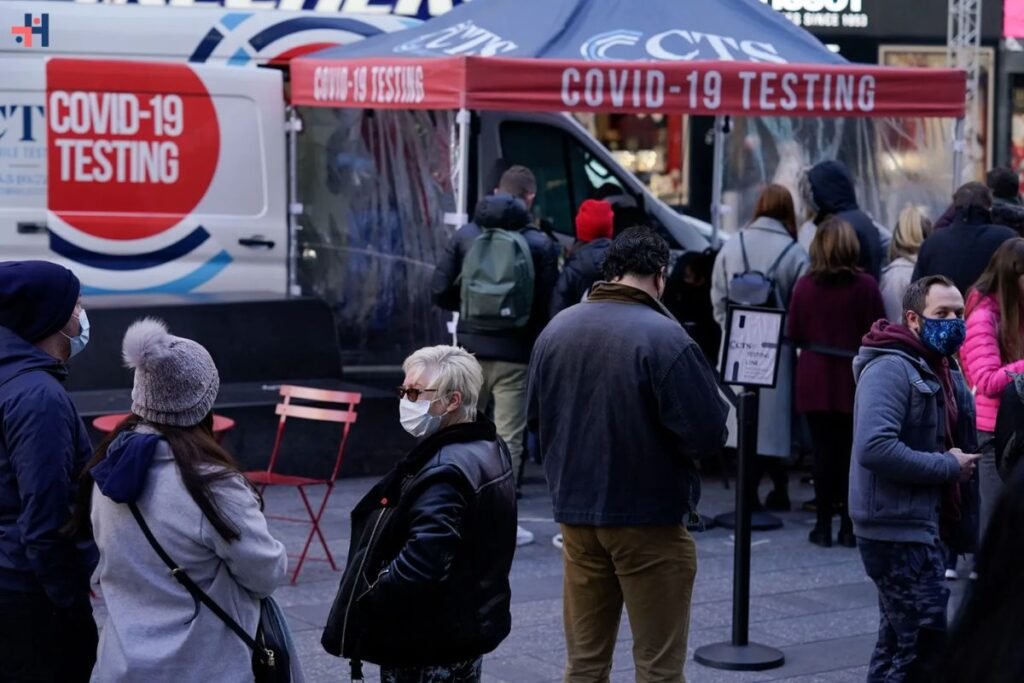(Source-rollingstone.com_)
New York City is witnessing a significant surge in COVID-19 cases, potentially affecting summer plans for many residents. This rise, mirrored both locally and nationally, has been ongoing for about two months and is attributed to the emergence of “FLiRT” variants. These variants are particularly adept at evading immunity, posing new challenges.
While mandatory COVID-19 cases mitigation measures have largely been lifted and the Centers for Disease Control and Prevention (CDC) has eased isolation guidelines, there are still steps individuals can take to protect themselves and others. Understanding the latest wave and its implications is crucial.
Current COVID Cases Wave in NYC
According to New York City data, the average number of daily reported COVID-19 cases was 687 during the week ending on June 22, marking a 250% increase from two months prior. That same week saw an average of 53 COVID-related hospitalizations each day, primarily affecting older adults, and one death. Public health experts caution that the decline in testing means reported case counts may not fully reflect the actual situation. State wastewater testing data suggests that New York City is experiencing a bump similar to last summer, though current virus levels remain lower than those during last winter’s surge.
Infectious disease experts observe that COVID-19 cases is beginning to follow a predictable seasonal pattern, with larger surges in the fall and smaller bumps in the summer. Dr. Jessica Justman, an epidemiologist at the Columbia Mailman School of Public Health, noted, “In the summer, there are family gatherings, there are weddings, and while people spend more time outdoors, they also gather indoors during heatwaves.”
Understanding the FLiRT Variants
The “FLiRT” variants have evolved to slip past immunity developed through vaccination or past infection. However, existing immunity generally makes symptoms milder. Andrew Pekosz, a professor at the Johns Hopkins Bloomberg School of Public Health, stated, “Overall, disease severity is dropping.” Dr. Aaron Glatt, chair of the medicine department at Mount Sinai South Nassau, added that the current strains do not appear to cause serious illness in most cases, presenting typically with symptoms like cough and upper respiratory issues.
Despite this, more severe cases involving shortness of breath are still seen, particularly among older patients and those at high risk. However, the need for intensive care units has become rare for COVID-19 cases patients.
Guidance for Those Who Fall Ill
The CDC’s updated guidance now focuses on symptoms rather than a strict isolation period. If you test positive for COVID-19, you should stay away from others until your symptoms have improved for at least 24 hours and you have been fever-free for at least 24 hours. In the following five days, practice good hygiene, wear a mask, and avoid close contact with others.
A COVID-19 cases test can provide a rough indication of infectiousness, but the same precautions should be taken for any respiratory illness. Dr. Glatt advises using common sense during recovery, such as avoiding visits to older relatives or those at high risk for severe COVID-19 cases . “When you’re starting to feel better, let people around you know, ‘I recently had COVID-19 Cases,’” he said.
With the rise in cases and the prevalence of the new FLiRT variants, it is important for New Yorkers to remain vigilant. Adopting preventive measures and being aware of the symptoms can help mitigate the spread of the virus and protect vulnerable populations.









